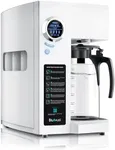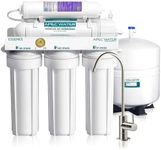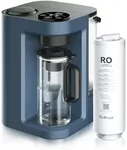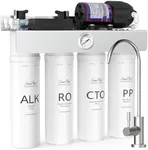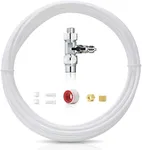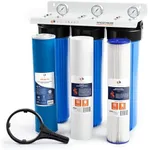Buying Guide for the Best Ro Water Purifiers
Choosing the right RO (Reverse Osmosis) water purifier is essential to ensure that you and your family have access to clean and safe drinking water. RO water purifiers are designed to remove impurities, contaminants, and harmful substances from water, making it safe for consumption. When selecting an RO water purifier, it's important to consider various specifications to ensure it meets your needs and provides the best performance. Here are some key specifications to consider and how to navigate them.Purification CapacityPurification capacity refers to the amount of water the purifier can process in a day, usually measured in liters per day (LPD). This spec is important because it determines how much purified water you can get daily. For small families or individuals, a purifier with a capacity of 10-15 LPD may be sufficient. For larger families or higher water consumption, look for purifiers with a capacity of 20-25 LPD or more. Assess your daily water usage to choose the right capacity for your needs.
Storage CapacityStorage capacity indicates the amount of purified water the purifier can store at a time, measured in liters. This is crucial if you experience frequent power cuts or have a high demand for water throughout the day. For small households, a storage capacity of 5-8 liters may be adequate. For larger families or areas with unreliable electricity, consider purifiers with a storage capacity of 10 liters or more. Choose based on your daily water consumption and storage needs.
Stages of PurificationStages of purification refer to the number of steps the water goes through to be purified. More stages generally mean better purification. Common stages include sediment filter, carbon filter, RO membrane, UV filter, and post-carbon filter. For basic purification, 4-5 stages may be sufficient. For areas with highly contaminated water, look for purifiers with 6-8 stages. Consider the quality of your water source to determine the necessary stages of purification.
TDS (Total Dissolved Solids) ReductionTDS reduction indicates the purifier's ability to reduce the concentration of dissolved solids in the water, measured in parts per million (ppm). This is important for improving the taste and safety of the water. For water with low to moderate TDS levels (up to 300 ppm), a standard RO purifier should suffice. For high TDS levels (above 300 ppm), look for purifiers with advanced TDS reduction capabilities. Test your water's TDS level to choose the right purifier.
Filter Replacement and MaintenanceFilter replacement and maintenance refer to the ease and frequency of changing filters and maintaining the purifier. This is important for ensuring the purifier continues to function effectively. Some purifiers have indicators for filter replacement, making it easier to maintain. Consider purifiers with easily accessible filters and clear maintenance guidelines. Choose a model with a maintenance schedule that fits your lifestyle and ensures long-term performance.
Power ConsumptionPower consumption indicates the amount of electricity the purifier uses, measured in watts. This is important for understanding the operational cost and energy efficiency of the purifier. For energy-conscious users, look for purifiers with lower power consumption (around 25-30 watts). For those who prioritize performance over energy use, higher power consumption may be acceptable. Consider your electricity usage and preferences to choose the right purifier.
Build Quality and MaterialBuild quality and material refer to the construction and durability of the purifier. This is important for ensuring the purifier lasts long and withstands regular use. Look for purifiers made from high-quality, food-grade plastic or stainless steel. For a more durable option, stainless steel is preferable. Assess the build quality and material to ensure the purifier is robust and safe for long-term use.
